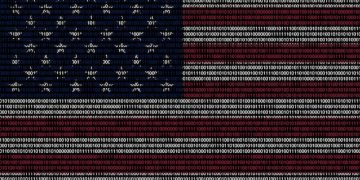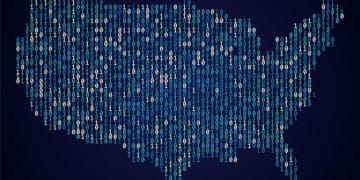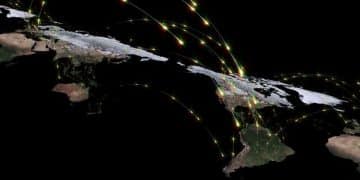Quantum Computing’s Impact on US Cybersecurity by 2025
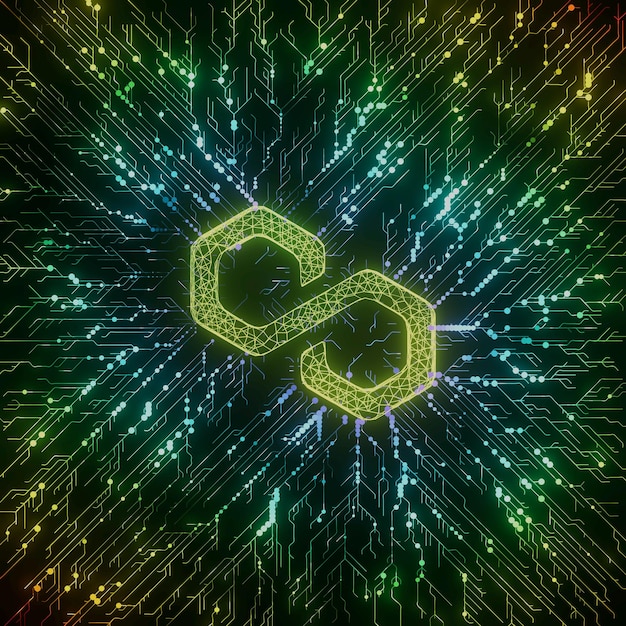
By 2025, quantum computing poses both a significant threat and an opportunity for US cybersecurity, potentially breaking current encryption while also enabling more secure communication methods.
The landscape of US cybersecurity is on the verge of a monumental transformation due to the rapid advancements in quantum computing. The question, **How Will Quantum Computing Impact US Cybersecurity by 2025?**, is no longer a matter of if, but how drastically our digital defenses will need to evolve to counter quantum threats and harness quantum opportunities.
Understanding Quantum Computing and Its Potential
Quantum computing, unlike classical computing, leverages the principles of quantum mechanics to solve complex problems. This involves using qubits, which can exist in multiple states simultaneously, enabling vastly superior processing power. Understanding this potential is crucial to grasping its implications for cybersecurity.
The implications of this technology are far-reaching, presenting both opportunities and challenges for various sectors, including cybersecurity. Let’s delve deeper into what quantum computing entails and why it is poised to reshape the digital landscape.
The Basics of Quantum Computing
Classic computers store information as bits, representing either 0 or 1. Quantum computers, on the other hand, use qubits. Qubits can represent 0, 1, or a superposition of both states simultaneously. This superposition, along with other quantum phenomena like entanglement, allows quantum computers to perform calculations in ways that are impossible for classical computers.
The Promise of Unprecedented Processing Power
The computational power of quantum computers grows exponentially with the number of qubits. This exponential growth means that a quantum computer with just a few hundred qubits can potentially outperform even the most powerful supercomputers in certain tasks. This capability opens up new possibilities for simulations, optimization problems, and, notably, code-breaking.
- Superposition: Allows qubits to exist in multiple states at once, significantly increasing computational possibilities.
- Entanglement: Correlates the states of two or more qubits, enabling simultaneous operations.
- Quantum Algorithms: Algorithms designed specifically to leverage quantum mechanics for faster and more efficient problem-solving.
- Shor’s Algorithm: A quantum algorithm with the potential to break many of the current encryption methods used to secure data.
In conclusion, quantum computing represents a paradigm shift in computational technology. Its unique capabilities offer opportunities to solve previously intractable problems. However, this increased power also poses a significant threat to existing cybersecurity infrastructure, particularly in the United States, which relies heavily on current encryption standards.
The Looming Threat to Current Encryption Methods
One of the most immediate and concerning impacts of quantum computing on US cybersecurity is its potential to break current encryption methods. Algorithms like RSA and ECC, which are the foundation of much of our online security, are vulnerable to quantum attacks. The threat is not hypothetical; it is a mathematical certainty given sufficient quantum computing power.
As quantum technology advances, the race is on to develop countermeasures to protect sensitive data and systems from these emerging threats. Understanding which encryption methods are at risk and how they can be compromised is essential for developing effective defense strategies.
Shor’s Algorithm and Its Implications
Shor’s algorithm, developed by mathematician Peter Shor, is a quantum algorithm that can efficiently factor large numbers. Factoring large numbers is the basis for the security of RSA (Rivest-Shamir-Adleman) encryption, a widely used method for securing online communications, financial transactions, and data storage. Once a quantum computer is powerful enough to run Shor’s algorithm effectively, RSA encryption will become easily breakable.
Vulnerability of Elliptic Curve Cryptography (ECC)
Elliptic Curve Cryptography (ECC) is another commonly used encryption method, particularly favored for its efficiency and security in smaller key sizes. ECC is used to secure many mobile devices and web servers. While ECC is more resistant to classical attacks than RSA, it is still vulnerable to quantum attacks using Shor’s algorithm or similar quantum algorithms. This vulnerability makes ECC an area of concern for cybersecurity experts as quantum computing capabilities grow.

- Data Interception: Quantum computers could intercept and decrypt sensitive data transmitted over networks.
- Compromised Keys: Quantum computers could break encryption keys, allowing unauthorized access to systems and data.
- Financial Disruption: Decryption of financial transactions could lead to fraud and financial instability.
- Espionage: Adversaries could use quantum computers to decrypt communications and steal classified information.
In summary, the threat posed by quantum computing to current encryption methods cannot be overstated. Algorithms like RSA and ECC, which are essential for modern cybersecurity, are at risk of being broken by quantum computers. Addressing these vulnerabilities is a top priority for policymakers, cybersecurity experts, and technology companies alike.
Post-Quantum Cryptography: The Race to Secure Our Future
In response to the threat posed by quantum computers, researchers are developing post-quantum cryptography (PQC), also known as quantum-resistant cryptography. PQC involves creating new cryptographic algorithms that are resistant to attacks from both classical and quantum computers. This proactive approach is essential to ensure the continued security of digital systems in the face of advancing quantum capabilities.
The development and deployment of PQC is a race against time. The goal is to have new, quantum-resistant algorithms in place before quantum computers become powerful enough to break existing encryption. Let’s explore the ongoing efforts and the key strategies involved in this critical cybersecurity endeavor.
NIST’s PQC Standardization Process
The National Institute of Standards and Technology (NIST) has been leading an international effort to standardize post-quantum cryptography. NIST has evaluated numerous candidate algorithms, selecting the most promising ones for standardization. This process aims to ensure that the algorithms chosen are both secure and practical for real-world applications. The final standards are expected to be published in the coming years, providing a foundation for secure communication in the quantum era.
Key Approaches in Post-Quantum Cryptography
Several cryptographic approaches are being explored in the development of PQC. These include lattice-based cryptography, code-based cryptography, multivariate cryptography, and hash-based cryptography. Each approach relies on different mathematical problems that are believed to be hard for both classical and quantum computers to solve. By diversifying the methods used, PQC aims to reduce the risk of a single point of failure.
- Lattice-Based Cryptography: Uses mathematical problems related to lattices, offering strong quantum resistance.
- Code-Based Cryptography: Based on the difficulty of decoding general linear codes, a problem considered hard for quantum computers.
- Multivariate Cryptography: Relies on the difficulty of solving systems of multivariate polynomial equations over finite fields.
- Hash-Based Cryptography: Uses cryptographic hash functions, offering resistance to quantum attacks while being relatively simple to implement.
Ultimately, the development of post-quantum cryptography is a critical step in ensuring the long-term security of digital systems. By creating algorithms that are resistant to both classical and quantum attacks, PQC aims to protect sensitive data and maintain trust in online communications and transactions. The ongoing efforts led by organizations like NIST are essential to standardize and deploy these new cryptographic methods effectively.
Quantum Key Distribution: A More Secure Future?
In addition to post-quantum cryptography, quantum key distribution (QKD) offers another approach to securing communications against quantum attacks. QKD leverages the principles of quantum mechanics to securely distribute encryption keys. Unlike traditional cryptography, which relies on mathematical algorithms, QKD is based on the laws of physics, making it inherently more resistant to eavesdropping.
QKD offers the promise of “unbreakable” encryption keys. However, it also comes with its own set of challenges and limitations. Let’s explore the potential and the practical considerations of using QKD to enhance cybersecurity.
How Quantum Key Distribution Works
QKD uses the principles of quantum mechanics to transmit encryption keys over a communication channel. The sender encodes the key as a series of quantum states, typically using photons. If an eavesdropper attempts to intercept or measure these quantum states, it will inevitably disturb them, alerting the sender and receiver to the presence of an intrusion. This disturbance allows them to discard the compromised key and establish a new, secure key.
Advantages of Quantum Key Distribution
QKD offers several advantages over traditional key exchange methods. Its security is based on the fundamental laws of physics, making it resistant to mathematical attacks, including those from quantum computers. QKD also provides a way to detect eavesdropping attempts in real-time, allowing for immediate countermeasures. This combination of security and intrusion detection makes QKD an attractive option for protecting sensitive communications.
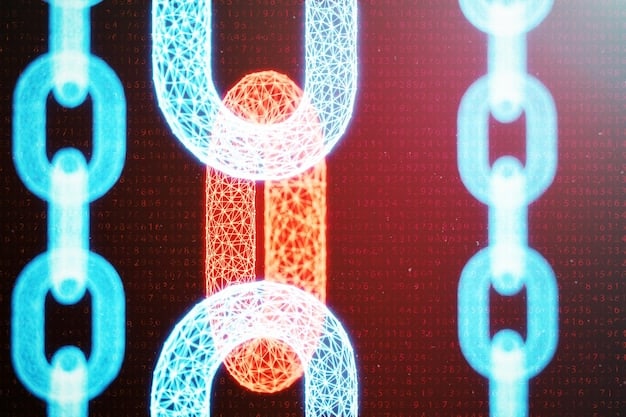
- Quantum-Proof Security: QKD provides security based on the laws of physics, making it resistant to quantum computer attacks.
- Eavesdropping Detection: QKD allows for the detection of any attempt to intercept or measure the quantum states, ensuring secure key exchange.
- Improved Key Management: QKD can automate the key exchange process, reducing the risk of human error and improving overall security.
- Enhanced Privacy: QKD ensures that the encryption keys remain private, protecting sensitive information from unauthorized access.
In conclusion, quantum key distribution offers a promising approach to securing communications in the quantum era. By leveraging the principles of quantum mechanics, QKD provides a way to distribute encryption keys securely and detect eavesdropping attempts. While QKD has its challenges, its potential to enhance cybersecurity is significant, making it an area of ongoing research and development.
Preparing for the Quantum Shift: Steps for US Organizations
The impending quantum revolution requires US organizations to take proactive steps to prepare for the shifts in cybersecurity. Waiting for quantum computers to mature before acting is not an option. Organizations need to assess their vulnerabilities, develop mitigation strategies, and invest in quantum-resistant solutions to protect their data and systems. This includes a comprehensive risk assessment, a transition plan for post-quantum cryptography, and ongoing monitoring and adaptation.
The challenge is not only technical but also strategic. Organizations need to foster partnerships between IT, cybersecurity, and business units to ensure a holistic approach to quantum readiness. Let’s explore the essential steps that US organizations can take to navigate this changing landscape.
Assess Your Organization’s Vulnerabilities
The first step in preparing for the quantum shift is to assess your organization’s vulnerabilities. This involves identifying the data and systems that are most at risk from quantum attacks. It also means evaluating the current cryptographic methods used to protect that data and determining which ones are vulnerable to Shor’s algorithm or other quantum algorithms. Understanding these vulnerabilities is essential for prioritizing mitigation efforts.
Develop a Transition Plan for Post-Quantum Cryptography
Once vulnerabilities have been identified, organizations need to develop a transition plan for post-quantum cryptography. This plan should include a timeline for replacing vulnerable algorithms with quantum-resistant alternatives. It should also outline the resources needed to implement these changes, including personnel, software, and hardware. A well-defined transition plan is crucial for ensuring a smooth and effective migration to PQC.
- Inventory Cryptographic Assets: Identify all systems and applications that use cryptography.
- Prioritize High-Risk Systems: Focus on systems that handle sensitive data or critical infrastructure.
- Implement PQC Gradually: Start with pilot projects and gradually expand the deployment of PQC.
- Stay Informed: Keep abreast of the latest developments in quantum computing and post-quantum cryptography.
In the face of the impending quantum shift, US organizations must take proactive steps to protect their data and systems. This includes assessing vulnerabilities, developing a transition plan for post-quantum cryptography, and investing in quantum-resistant solutions. By taking these steps, organizations can minimize their risk and ensure the continued security of their digital assets.
The Role of Government and Policy in Quantum Cybersecurity
Government and policy play a crucial role in shaping the landscape of quantum cybersecurity. The US government has been actively involved in supporting research and development in quantum computing and post-quantum cryptography. Policy decisions related to standardization, export controls, and cybersecurity regulations will have a significant impact on the adoption and deployment of quantum-resistant solutions. International collaboration is essential to address the global challenges posed by quantum threats.
The actions taken by governments and policymakers today will determine the security posture of the US in the quantum era. Let’s examine the key areas where government and policy can make a difference.
Government Investment in Quantum R&D
The US government has made substantial investments in quantum research and development. Agencies such as the National Science Foundation (NSF), the Department of Energy (DOE), and the Department of Defense (DOD) have funded quantum computing projects and initiatives. These investments have helped to advance the state of the art in quantum technology and accelerate the development of quantum-resistant solutions. Continued government support is crucial for maintaining US leadership in this field.
Cybersecurity Regulations and Standards
Cybersecurity regulations and standards also play a vital role in promoting quantum readiness. Regulations can mandate the use of quantum-resistant cryptography in certain sectors or for certain types of data. Standards, such as those developed by NIST, can provide a framework for implementing PQC and ensuring interoperability. By establishing clear guidelines and requirements, government and policy can drive the adoption of quantum-resistant solutions across the US.
- Promote Research: Fund research and development in quantum computing and post-quantum cryptography.
- Establish Standards: Develop cybersecurity standards that incorporate quantum-resistant algorithms.
- Incentivize Adoption: Provide incentives for organizations to adopt quantum-resistant solutions.
- Foster Collaboration: Encourage collaboration between government, industry, and academia to address quantum threats.
In conclusion, government and policy are essential components of the quantum cybersecurity landscape. Through investments in research, the establishment of standards, and the enforcement of regulations, the US government can help ensure that the nation is prepared to face the challenges and opportunities presented by quantum computing. International collaboration is also crucial for addressing the global implications of quantum threats.
| Key Point | Brief Description |
|---|---|
| 🔑 Quantum Threat | Quantum computers can break current encryption methods. |
| 🛡️ Post-Quantum Cryptography | New algorithms resistant to quantum and classical attacks. |
| 📡 Quantum Key Distribution | Secure key distribution based on quantum physics. |
| 🏛️ Government Role | Policy, investment, and standards crucial for quantum readiness. |
Frequently Asked Questions
▼
Quantum computing is a type of computing that uses the principles of quantum mechanics, such as superposition and entanglement, to perform calculations. These principles allow quantum computers to solve certain problems much faster than classical computers.
▼
Quantum computers can run algorithms like Shor’s algorithm that can efficiently factor large numbers, which is the basis of many current encryption methods like RSA. This could allow quantum computers to break existing encryption and decrypt sensitive data.
▼
Post-quantum cryptography (PQC) involves developing new cryptographic algorithms that are resistant to attacks from both classical and quantum computers. NIST is currently leading an effort to standardize PQC algorithms for widespread use.
▼
Quantum key distribution (QKD) is a method of securing communications by using the principles of quantum mechanics to distribute encryption keys. QKD allows for the detection of any attempt to intercept or measure the quantum states, ensuring secure key exchange.
▼
Organizations can assess their vulnerabilities, develop a transition plan for post-quantum cryptography, invest in quantum-resistant solutions, inventory cryptographic assets, prioritize high-risk systems, implement PQC gradually, and stay informed about developments.
Conclusion
As we approach 2025, the impact of quantum computing on US cybersecurity will be significant and multifaceted. While it presents a clear and present danger to existing encryption methods, it also offers opportunities to enhance security through post-quantum cryptography and quantum key distribution. Preparing for this quantum shift requires proactive measures, including government support, policy development, and organizational readiness. By embracing these changes, the US can secure its digital future and maintain its leadership in the face of quantum threats.
